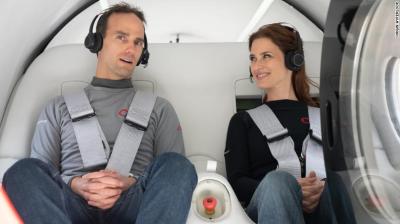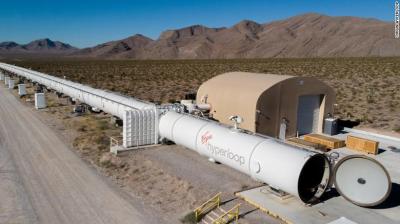When it comes to travelling long distances, Americans tend to rely on planes, while the Chinese and Europeans love their high speed rail. However, a new technology promises greater speed with lower fares, with fancy pods travelling in large tubes held at near-vacuum pressures. It goes by the name of Hyperloop.

Spawned from an “alpha paper” put together by Elon Musk in 2013, the technology is similar to other vactrain systems proposed in the past. Claiming potential top speeds of up to 760 mph, Hyperloop has been touted as a new high-speed solution for inter city travel, beating planes and high speed rail for travel time. Various groups have sprung up around the world to propose potential routes and develop the technology. Virgin Hyperloop are one of the companies at the forefront, being the first to run a pod on their test track with live human passengers, reaching speeds of 100 mph over a short 500 meter run.
It’s an exciting technology with a futuristic bent, but to hit the big time, it needs to beat out all comers on price and practicality. Let’s take a look at how it breaks down.
Fast But Compact
While many Hyperloop projects are under development around the world, the most-discussed proposal thus far has been the original idea of a route linking Los Angeles and San Francisco. The initial claims from the Musk camp were that a 350-mile Hyperloop system linking the two cities could be constructed for $6-7 billion, charging $20 for the lighting-quick 35 minute ride. Each pod would carry 28 passengers, with each pod spaced out by as little as 30 seconds in transit. Claimed maximum ridership for a two-tube system would be on the order of 15 million trips per year. Multiplying that out, that comes to $300 million in revenue generated by the heavily-patronised system.
Obviously, with ticket prices so low, journey times so short, and with far less fuss compared to taking a flight, the Hyperloop looks promising on paper. However, digging deeper, the fundamentals of the project don’t look so rosy. With such a low number of passengers per pod, the total flow rate of passengers through the system is limited, on the order of just 3360 passengers per hour. Projected land costs are likely far in excess of the mere $1 billion cited in the original Hyperloop paper, leading many to suspect the $6 billion cost is likely off by a factor of 10 or more, with tickets more realistically costing $1000 apiece.

For comparison’s sake, the politically troubled high speed rail project in California aims to link the same two cities with conventional high-speed rail. Breaking ground in 2015, the project is targeted for completion sometime before 2030. But to date it has faced all manner of complications, not least with the acquisition of suitable rights-of-way to build the railway on. Land acquisition is often the biggest hurdle for such transport links, and this makes up much of the project’s $68 billion budget. The railway plans to operate at 220 mph, with a targeted travel time of under 2 hours 40 minutes from San Francisco to LA on a 380 mile route. Projected ridership is on the order of 16 million in 2029, ramping up to 35.6 million by 2033. Fares are on the order of $100 for the full route, leading to expected revenue of $2.2 billion by 2033.
Crunching the Per-Mile Costs
With a proven technology like high speed rail costing tens of billions of dollars, it’s somewhat difficult to believe a never-before-built Hyperloop system could be cheaper. This is before considering the technical difficulties of keeping huge stretches of large-diameter tube at low enough pressures to maintain high speed travel, or the safety concerns of how to rescue passengers stuck inside a broken-down pod. Other than speed, in every other metric, Hyperloop seems to fall down relative to the traditional high-speed rail option. As a bonus, at least on the Californian route, that rail option is already under construction, and it promises better-located stations, too.

Further studies have only confirmed the higher costs that could realistically be expected of such a system. Modelling by Virgin Hyperloop One in 2016 estimated a per-mile cost of $84 to $121 million for a cut-down 107-mile Bay Area project. This compares to a projected cost of $178 million per mile for the full Californian high speed rail project. It’s difficult to understand how a complex Hyperloop system could be cheaper to build than a simple set of rails, but even if it can, proposals still fall down when it comes to the lower number of passengers per hour able to flow through the system.
Given we’ve only just seen the first human test of a Hyperloop prototype, it’s perhaps too early to discount the technology entirely. However, thus far, it fails to present a sustainable business case unless passenger flow rates can be increased significantly. It’s a similar problem that doomed the Concorde, and it could happen again here. But with so many projects underway around the world, we may yet see a real working Hyperloop in operation sooner rather than later.
No comments:
Post a Comment